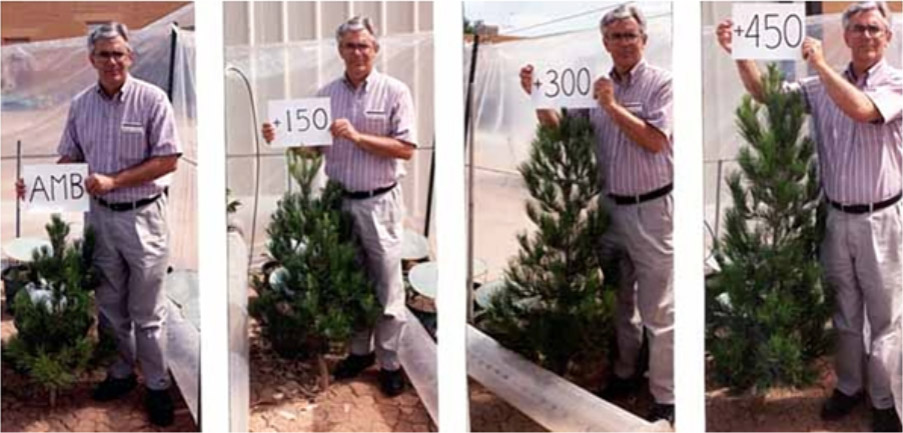More CO2 in the air means more plant growth.
Earth’s current atmospheric CO2 concentration is almost 390 parts per million (ppm). Adding another 300 ppm of CO2 to the air has been shown by literally thousands of experiments to greatly increase the growth or biomass production of nearly all plants. This growth stimulation occurs because CO2 is one of the two raw materials (the other being water) that are required for photosynthesis. Hence, CO2 is actually the “food” that sustains essentially all plants on the face of the earth, as well as those in the sea. And the more CO2 they “eat” (absorb from the air or water), the bigger and better they grow (see table below).






Adding more CO2 to the air also benefits plants in other ways:
They generally do not open their leaf stomatal pores as wide as they do at lower CO2 concentrations, and they tend to produce fewer such pores per unit area of leaf surface. Both of these changes tend to reduce plant transpiration or water loss; and the amount of growth they experience per unit of water lost (water-use efficiency) therefore rises, greatly increasing their ability to withstand drought. And with fewer and smaller stomatal openings, plants exposed to elevated levels of atmospheric CO2 are also less susceptible to damage by noxious air pollutants, including ozone and oxides of nitrogen and sulfur, that gain entry into plants via these portals. Higher CO2
concentrations also help plants by reducing the negative effects of a number of other environmental stresses, such as high soil salinity, high air temperature, low air temperature, low light intensity, low levels of soil fertility, oxidative stress, and the stress of herbivory.
A visual example of the benefits described above is portrayed in the figure below, where the results of growing a common house plant (Devil’s Ivy or Golden Pothos) at about 200 ppm below (left) or 350 ppm above (right) the atmosphere’s current CO2 concentration is shown. As you examine this figure, ask yourself in which direction would you like to be heading if you were a plant: toward higher or lower atmospheric CO2 concentrations?
Yes, CO2 is green;

and a wealth of research has shown that
more of it in the air is a very good thing.
To learn additional facts about why we need more CO2 in our atmosphere — and definitely not less —





